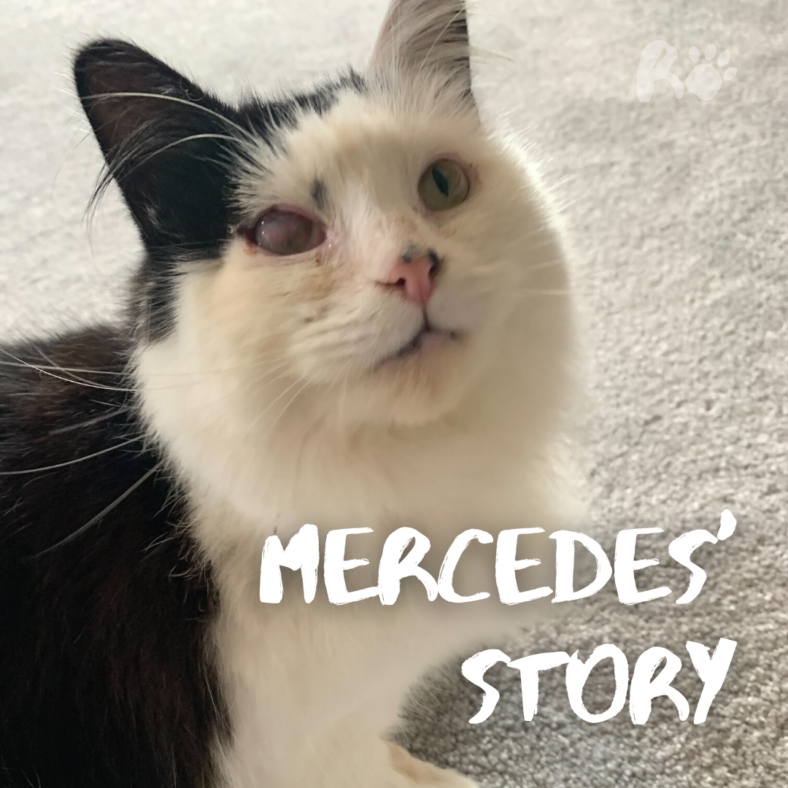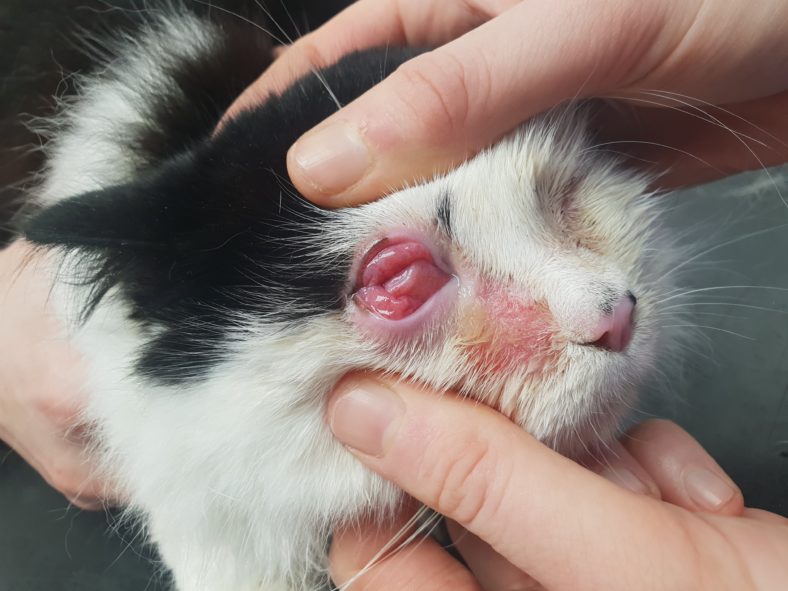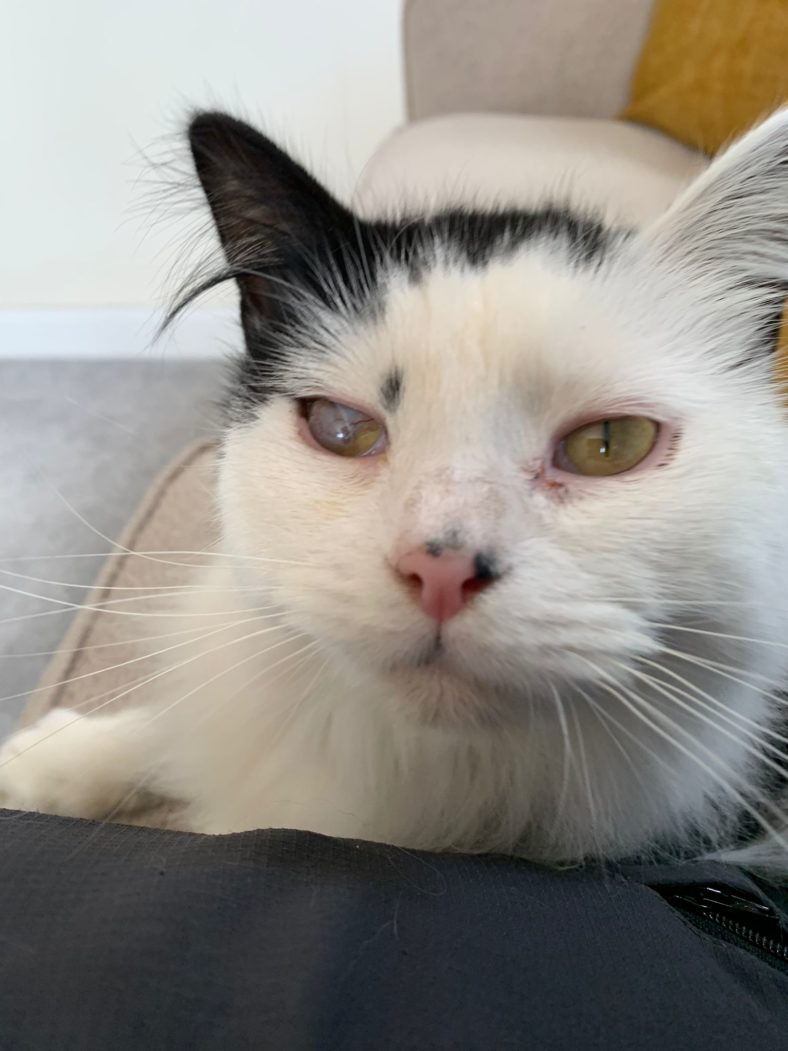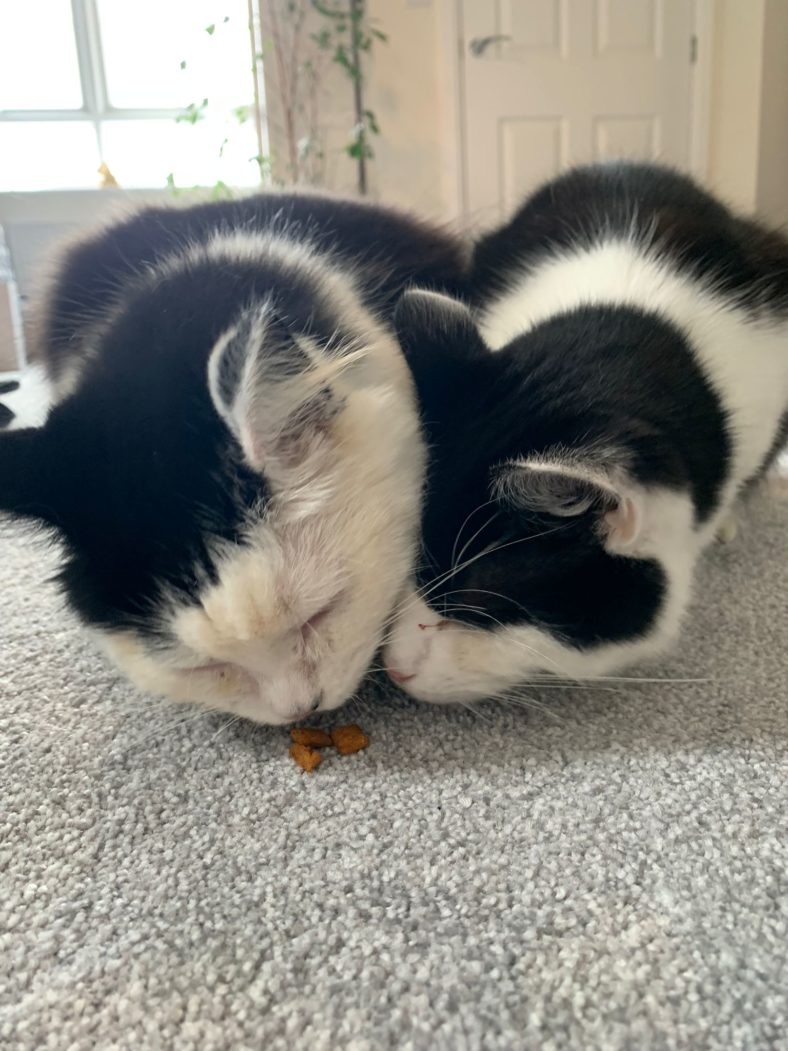Our Community
Mercedes’ story

Please note, this blog contains an image of Mercedes’ eye which some readers may find disturbing.
Mercedes’ carer noticed she was having problems with her eyes – she was squinting and blinking a lot. And her eyes had also started producing a pus-like discharge. She was seen at her daytime family practice where an eye examination revealed significant swelling of the pink part of the eyes (the conjunctiva) making it difficult to see the eyes themselves. Mercedes was clearly in a lot of discomfort.
Mercedes was referred to our Ophthalmology team for further assessment and treatment. Emily, Ophthalmology Resident, conducted a full examination of Mercedes’ eyes. Emily discovered a severe corneal ulcer called a descemetocele in Mercedes’ right eye. The cornea is the ‘windscreen’ on the front of the eye. The normal corneal thickness is similar to that of a credit card and Mercedes had lost over 90% of that thickness, meaning the eye was held together by just a couple of layers of cells! In these cases, there is a high risk of rupture of the eye, which can be devastating. Although Mercedes’ right eye was incredibly fragile there was still hope that we could save it with a corneal graft procedure.

Swelling of the conjuctiva in Mercedes’ right eye. Photo taken by Mercedes’ daytime family practice
The left eye was in better condition than her right eye, but did have superficial ulcerative keratitis (the erosion of the very top layers of the cornea). Although less severe than a descemetocele, urgent treatment with antibiotic eye drops was required.
Emily and the Ophthalmology team, supported by our Anaesthesia team, performed a corneo-conjunctival transposition graft (also known as a sliding graft) on Mercedes’ right eye. During this delicate procedure Emily used an operating microscope to stabilise Mercedes’ eye using a healthy part of her own eye. The graft was secured in place with delicate stitches, which are similar in thickness to a human hair. This provided structural support and stability to the eye whilst the cornea had time to fully heal.

Mercedes post-surgery
Mercedes’ procedure was a success, and she recovered well from the general anaesthetic. She stayed with us for several days, receiving round-the-clock care, pain relief, eye drops and of course lots of chin scratches from our team of nurses. Mercedes made good progress in hospital so returned home to be reunited with her feline brother, and to continue being spoiled by her family.

Mercedes reunited with her brother
Thanks for reading Mercedes’ story. For regular news and patient stories, be sure to check out our Instagram, Facebook and LinkedIn.
Take care,
Team Ralph
